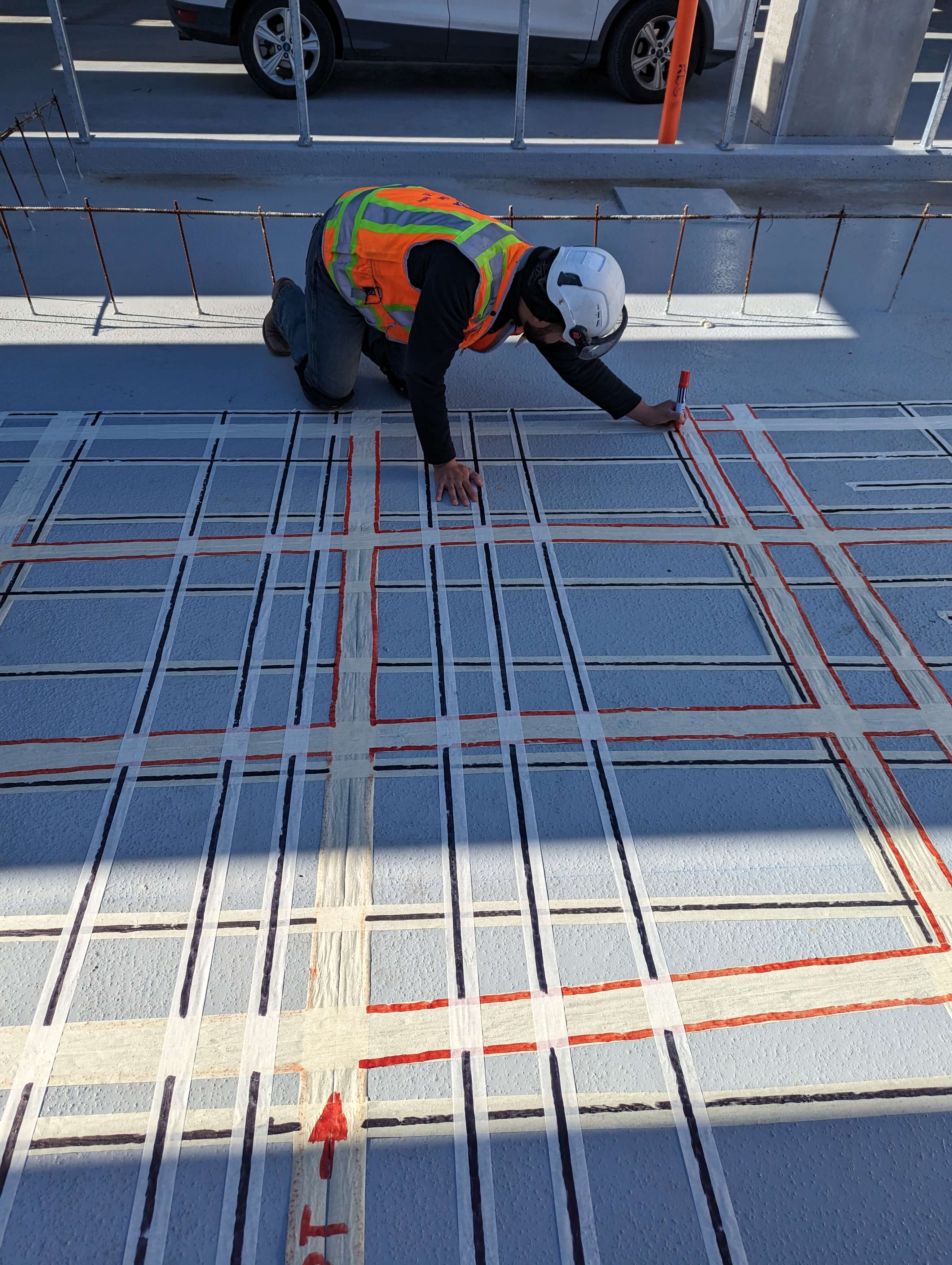Precision and Accuracy in Concrete Scanning Solutions
Precision and Accuracy in Concrete Scanning Solutions
Blog Article
Unveil the Transformative Power of Concrete Scanning in Taking Full Advantage Of Efficiency and Safety
Concrete scanning has arised as a vital device in the building sector, providing unrivaled benefits in boosting task performance and making certain safety and security standards. The transformative power of concrete scanning exists in its ability to offer in-depth understandings and real-time information, revolutionizing exactly how tasks are planned and performed.
Value of Concrete Scanning
Making sure the architectural stability and safety and security of building projects begins with the important step of carrying out thorough concrete scanning. Concrete scanning is a non-destructive approach utilized to detect and map subsurface elements within concrete frameworks.
Furthermore, concrete scanning assists in optimizing task timelines and spending plan by staying clear of unexpected prices and hold-ups that may develop due to unforeseen obstructions within the concrete. Eventually, investing in complete concrete scanning is an aggressive technique that boosts both performance and safety and security in building and construction tasks.
Just How Concrete Scanning Functions
Concrete scanning operates as a vital tool in building and construction jobs by employing sophisticated modern technologies to spot and map subsurface aspects without triggering structural damage. Ground Passing Through Radar (GPR) and Electromagnetic Induction (EMI) are 2 main methods utilized in concrete scanning.
Throughout the scanning procedure, the data gathered is evaluated in real-time, enabling prompt identification of prospective dangers or challenges beneath the surface. This information help in decision-making, making sure that construction activities continue safely and efficiently. Furthermore, 3D imaging software can be used to produce thorough maps of the subsurface aspects, even more enhancing task planning and execution. By employing these innovative technologies, concrete scanning dramatically reduces the danger of pricey damages and injuries on building and construction websites.
Benefits of Concrete Scanning
Using sophisticated scanning innovations in building and construction projects provides a wide range of advantages, enhancing both efficiency and security on-site. One of the main benefits of concrete scanning is the ability to spot and find ingrained items such as rebar, post-tension cable televisions, and channels accurately. By identifying these aspects before drilling or cutting right into concrete frameworks, the threat of accidental strikes is considerably reduced, preventing possible injuries to employees and damages to the structure itself. Additionally, concrete scanning helps in planning and making better, as it gives exact info about the area and depth of architectural elements.

Situation Researches: Concrete Scanning Success

In one more situation, a construction company made use of 3D concrete scanning to evaluate the condition of maturing concrete structures in a historic structure. The comprehensive scans provided beneficial understandings right into the degree of wear and tear and assisted focus on upkeep initiatives this effectively. By proactively dealing with areas of issue identified through scanning, the business was able to extend the life-span of the structure and make certain owner security.
These instance research studies underscore the transformative power of useful site concrete scanning in improving effectiveness, precision, and safety in construction jobs.
Implementing Concrete Scanning in Projects
Executing sophisticated scanning technologies throughout building tasks has become significantly necessary for boosting accuracy and security. By incorporating concrete scanning right into task preparation and implementation, building and construction groups can recognize possible hazards, such as rebar or post-tension cords, hidden within concrete frameworks. This proactive technique lessens the risk of crashes, hold-ups, and expensive rework, eventually causing much more efficient project timelines and budgets.
To apply concrete scanning properly, task supervisors ought to work together carefully with knowledgeable scanning specialists to figure out one of the most ideal scanning strategies for the specific project requirements. Engaging scanning professionals from the onset of a job enables the team to develop detailed scanning plans that resolve key areas of problem and make certain extensive data collection.
Moreover, incorporating concrete scanning into routine project workflows can streamline decision-making processes, as real-time scan information gives instant insights into the problem of concrete frameworks - Concrete Scanning. This data-driven approach promotes informed analytic and enables groups to make modifications quickly, cultivating a society of efficiency and safety and security throughout the job lifecycle

Final Thought
In conclusion, concrete scanning plays a crucial duty in improving effectiveness and safety in building and construction jobs. By making use of sophisticated technology to find and map out underlying structures within concrete, this process aids to avoid pricey blunders, guarantee structural stability, and decrease threats on site. With the ability to uncover covert aspects and give exact information, concrete scanning confirms to be a valuable useful link tool for optimizing project results and maximizing overall success.
Concrete scanning is a non-destructive method utilized to detect and map subsurface aspects within concrete frameworks. In addition, concrete scanning aids in maximizing task timelines and spending plan by staying clear of unexpected costs and hold-ups that might arise due to unexpected obstructions within the concrete. One noteworthy situation study includes a massive restoration task where concrete scanning played an important duty in making certain project success.In another instance, a building business used 3D concrete scanning to analyze the condition of aging concrete frameworks in a historical building. By integrating concrete scanning right into task planning and execution, building teams can identify potential dangers, such as rebar or post-tension wires, hidden within concrete frameworks.
Report this page